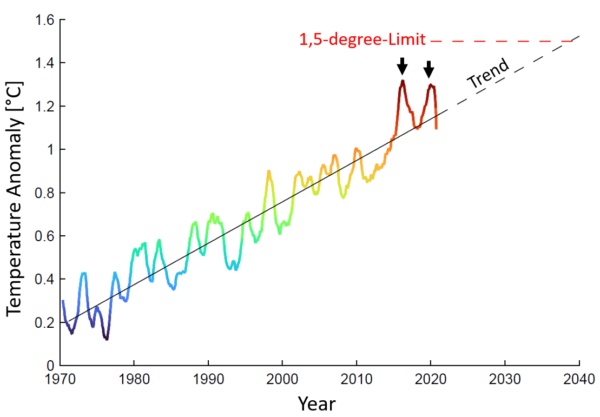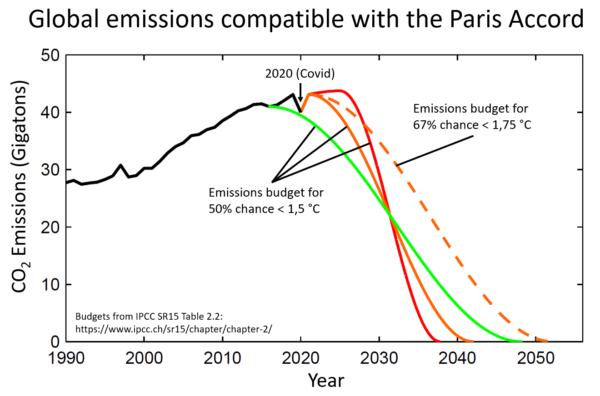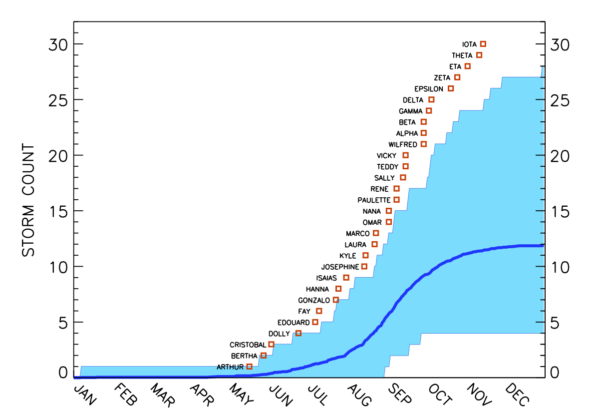And…. it’s that time again. The clock stopped on the Nenana ice classic this afternoon (April 30, 12:50pm AT). This is pretty much on trend and unsurprising given the relatively slightly cool winter in Alaska. The jackpot on offer this year was $233,591 but will likely be shared among several winners. This year’s ‘break up’ is a little odd, since the ice moved sufficiently to trigger the clock, but not enough to actually topple the tripod (which is still visible as this is being written (9pm ET) – Update 10:30pm ET: gone now though!). But, the rules are the rules…
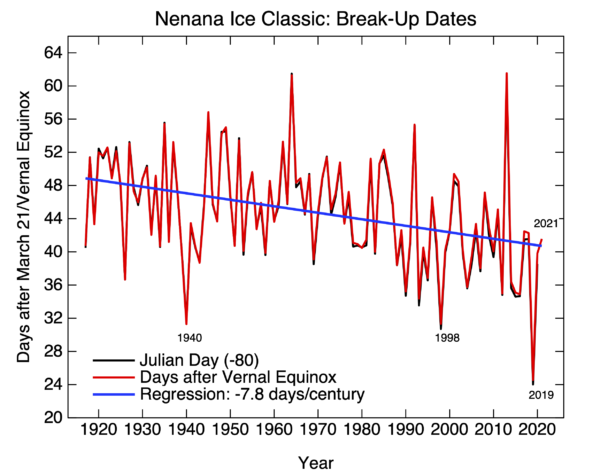
The trends in the break up date is about 8 days earlier per century (±4), estimated over the whole record, but substantially faster over the last 50 years (16 ± 12 days/century, 95% CI).
Other phenological records show similar trends, notably the longest cherry blossom record from Kyoto which dates back to 9th Century, and which had a record earliest peak bloom this year and a clear trend over the last few decades:
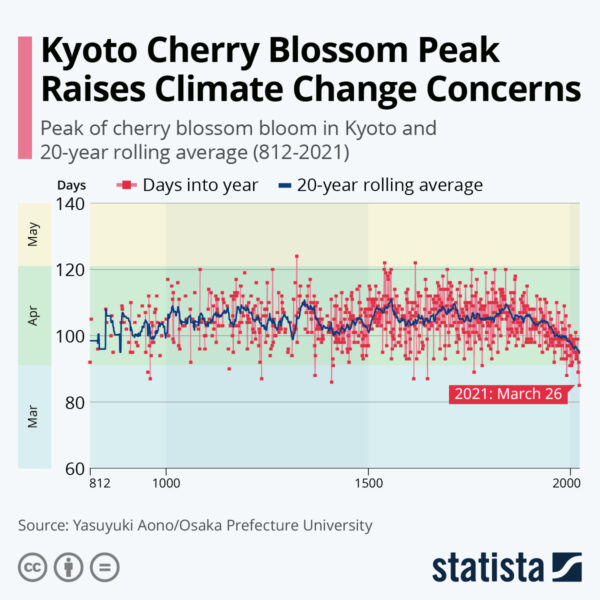
Feel free to link to your favorite such record in the comments…
